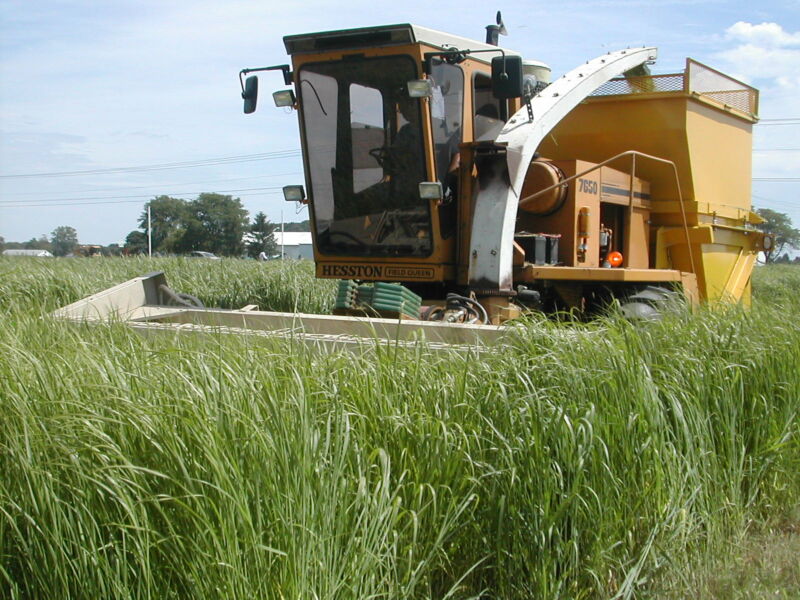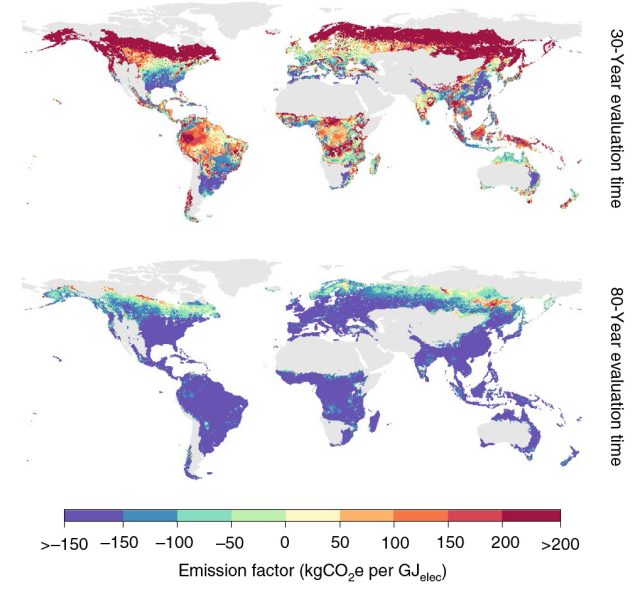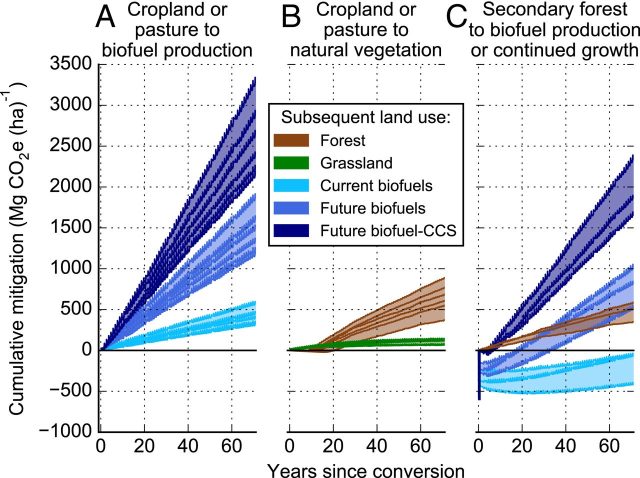C-MINUS —
begin quote from:
CO₂ removal to halt warming soon would be a gargantuan undertaking
Nothing is perfect, and the trade-offs could be large if poorly managed.

Enlarge / How much switchgrass could we grow for biofuels?
One of the options to help us get our balance of greenhouse gas emissions down faster is to actively remove some CO2 from the atmosphere. The idea is that it can be cheaper and easier to start CO2 removal while our energy systems are transitioning than to attempt to make that transition happen quickly enough to reach our climate goals. Obviously, there’s never a free lunch, and these ideas have attracted lots of scrutiny because of their side-effects and feasibility.
Crops vs. BECCS
Three studies published this week examine some of the issues of negative emissions in detail. The first focuses primarily on BECCS—bioenergy with carbon capture and storage. This is a technically attractive strategy that would involve growing biofuel crops, burning them to generate electricity, capturing the CO2 leaving the power plant’s exhaust, and storing that CO2 somewhere (probably deep underground). The added value from electricity generation makes this look cheaper than many methods that could pull similar amounts of CO2 out of the air. As a result, many emissions scenarios that manage to halt warming at 1.5°C or 2°C rely on sizable deployments of BECCS to get there.
The primary downside is the potential competition for land with food crops or forests. To get a much clearer picture, the study first set aside the land projected to be used for crops before working out the global potential for BECCS. They focused on crops like switchgrass and sugarcane, or woody plants like fast-growing poplar, and assumed that any carbon in vegetation present on land converted to this use was lost at the start (burned, for example). They ran the numbers for BECCS as well as liquid fuels like biodiesel or ethanol, for which much of the resulting CO2 is released rather than captured.
The results highlight the importance of sweating the details—outcomes vary considerably by geographic location and methods. Clearing an area of land for crops can create a large carbon “debt” that has to be paid up before your effort accomplishes anything, climate-wise. The more productive the biofuel crop is in a given climate zone and soil type, the faster it can pay that debt. Because of this, the timespan of the operation—or accounting—the better things can look. Over an 80-year period, most regions can turn a carbon storage “profit” with BECCS. But if you’re looking at the first 30 years, a number of sites would fail to overcome their initial debt.

Enlarge / Here is where BECCS could overcome its initial carbon debt (negative numbers, cool colors) for 30-year and 80-year timeframes.
So sticking with the suitable locations—and leaving cropland untouched—could BECCS supply all the carbon capture needed to make a 1.5°C warming scenario work? According to the study’s simulation, not quite, although it can get close. The effort would be massive, though. By 2100, these biofuel crops would occupy 5-16 percent of the Earth’s land area, depending on how quickly our CO2 emissions declined. At that point, BECCS power plants would be generating more electricity than the current global total.
Fill up my tank
The second study was focused on producing liquid biofuels for things like airplanes and shipping. This zeroed in on an even finer scale, using ecosystem modeling based on several study sites in the eastern US. The goal was to progress beyond generic estimates and see exactly where carbon would be going in biofuel cropland, accounting for soil processes and the details of the biofuel-production process. Might there be cases where that land could have a bigger carbon impact if it were just reforested?
This scenario was based on switchgrass grown for ethanol or biofuel, with a 70-year timeframe and the initial vegetation on converted land harvested for energy rather than burned. It also included scenarios for improved switchgrass crops and fuel-making processes, as well as the possibility of capturing the carbon emitted during fuel production.
Unsurprisingly, the study found that using cropland or former pasture produced a much clearer carbon benefit than converting forest for switchgrass agriculture. But for cropland and pasture, even current methods had a greater climate benefit than restoring them to grasslands would. If the land is suitable for reforestation, on the other hand, doing so would likely beat biofuels. Introduce some improvements in switchgrass yields and biofuel production efficiency, though, and it tops reforestation for climate mitigation. So there is a positive path here, in the right circumstances.
The authors write, “While climate and other ecosystem service benefits cannot be taken for granted from cellulosic biofuel deployment, our scenarios illustrate how conventional and carbon-negative biofuel systems could make a near-term, robust, and distinctive contribution to the climate challenge.”

Enlarge / Here's how carbon storage accumulates for different techniques, depending on the land type used.
DAC it up
The third study looked at an entirely different technology—“direct air capture” (DAC) of CO2 from ambient air, after which it can be stored underground. As several companies have advanced designs for this process, and even built pilot plants, DAC has entered the realm of the plausible. It has the advantage of concentrating the work into the footprint of a facility rather than acres of arable land. So is DAC all the capture with none of the side-effects?
Well, not exactly. It’s still comparatively quite expensive, and it trades voracious land use for voracious energy use. The study modeled the consequences of meeting 1.5°C warming pathways with BECCS and forest expansion to meet our CO2 removal needs, and it contrasted that with using direct air capture instead. With things like BECCS allowed to take over cropland, they simulated pretty extreme increases in staple crop prices, particularly in the Global South.
Direct air capture doesn’t contribute to that problem, but water use in the two scenarios is actually similar. And the heat required in the DAC process—provided by natural gas with capture of the emitted CO2 in some pilots—could be equivalent to two-thirds of current natural gas production or more.
But even with the current state of this young technology, the economic model shows that DAC could play a substantial role, removing enough CO2 by 2035 to equal 7 percent of current-day emissions, if we’re willing to go that route.
The authors of this study emphasize a take-away message that applies to all three: “These results highlight that delays in aggressive global mitigation action greatly increase the requirement for DAC to meet climate targets, and correspondingly, energy and water impacts.” The sooner we start reducing our emissions, the less of a need there will be for these carbon-removal techniques, allowing us to minimize the scale of the trade-offs they come with.
Nature Climate Change, 2020. DOI: 10.1038/s41558-020-0885-y, 10.1038/s41558-020-0876-z
PNAS, 2020. DOI: 10.1073/pnas.1920877117 (About DOIs).
PNAS, 2020. DOI: 10.1073/pnas.1920877117 (About DOIs).
No comments:
Post a Comment